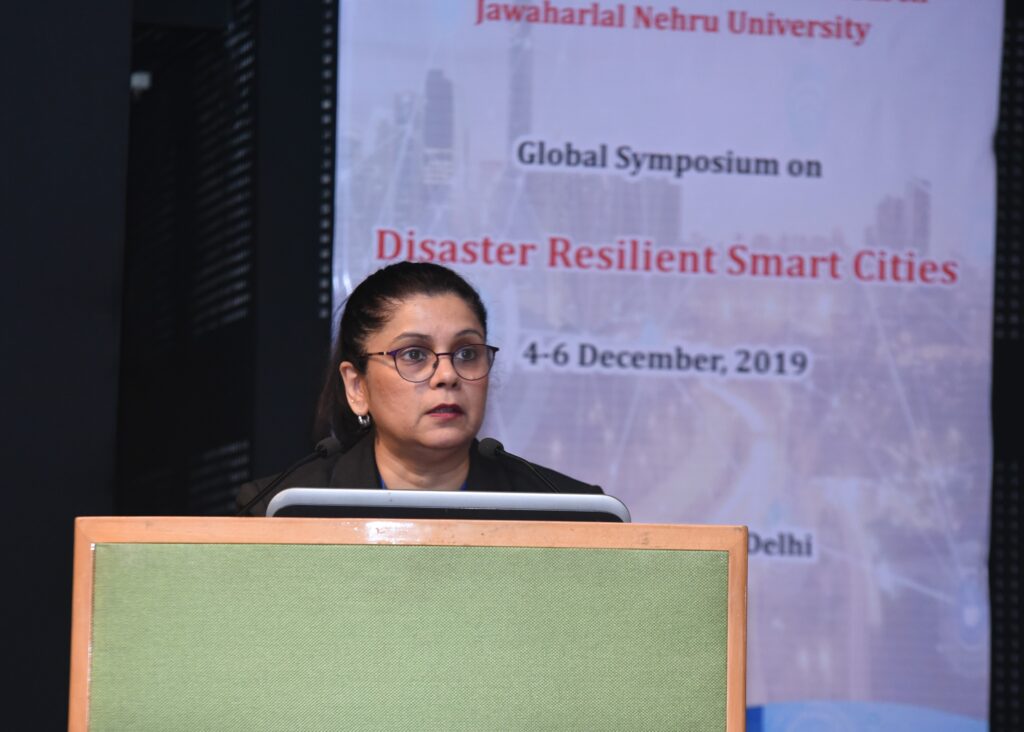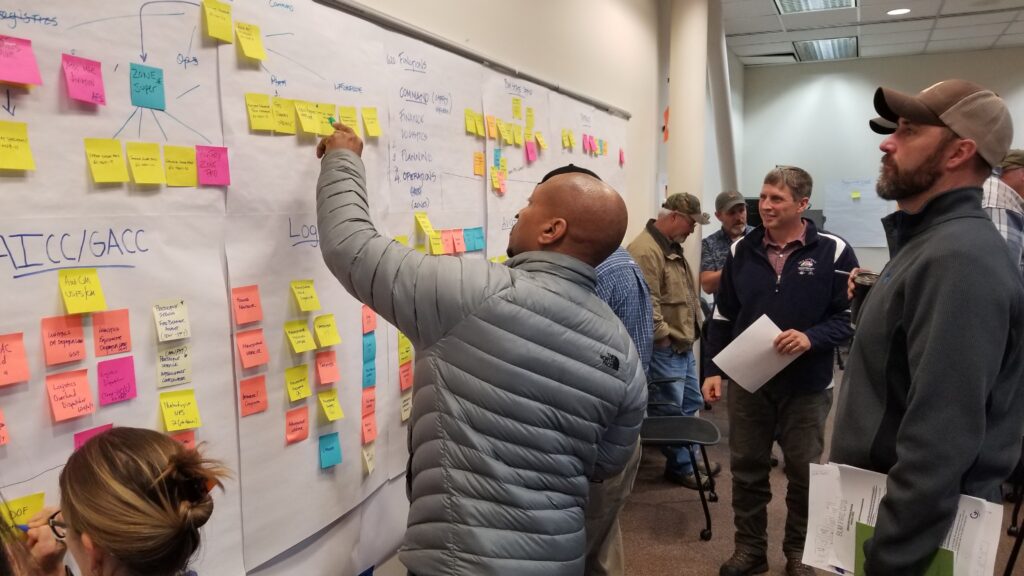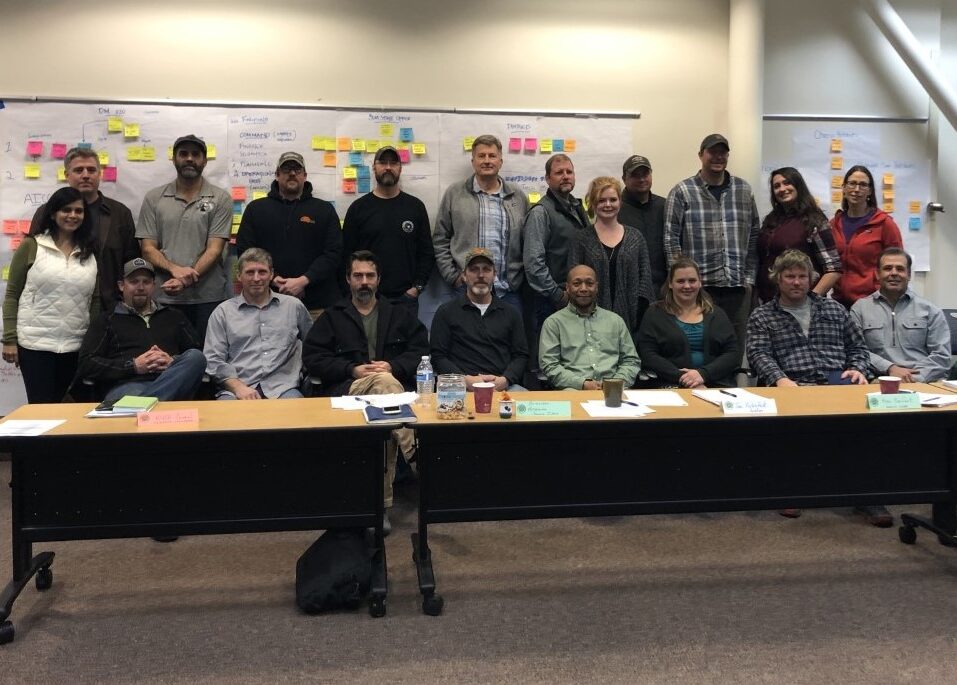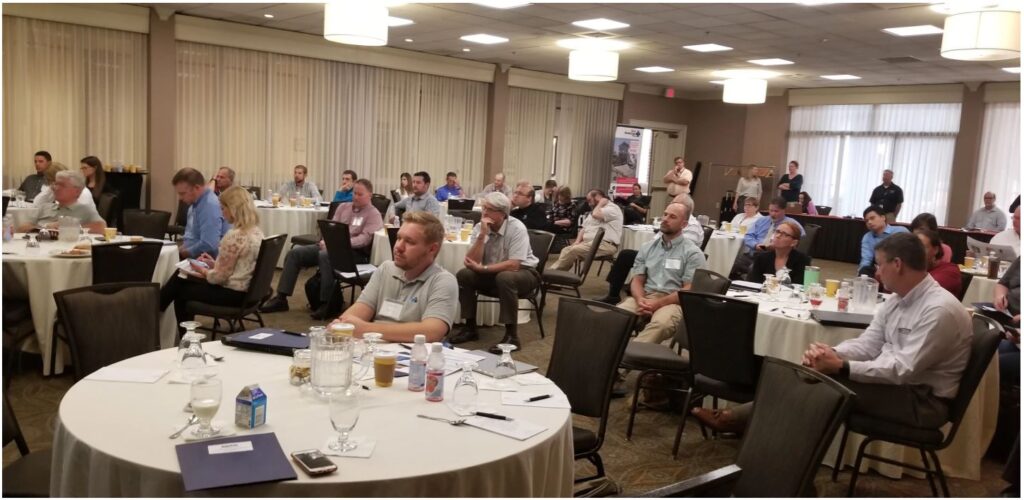VPC recently presented at the Global Symposium on Disaster-Resilient Smart Cities at the Institute of Industrial Development in New Delhi, India. VPC was among over 100 other speakers, from five continents, who were invited to discuss needs, gaps, and success stories on smart city initiatives from all over the world. VPC posed a challenge question: “Are Smart Cities really disaster resilient?”, and conversely, are cities with disaster resilience initiatives considered smart? VPC’s presentation comprised case studies of smart elements/initiatives/technologies from around the globe in the areas of disaster preparedness, mitigation, response and recovery.

This Symposium was organized in collaboration with: the Ministry of Housing and Urban Affairs, Government of India, which is the nodal ministry for implementing Smart Cities Mission in India; Netexplo Smart Cities Accelerator group of Paris; Indian National Institute of Disaster Management; Indian Oil Corporation Ltd; Delhi Transco Ltd; Indian Council of Social Science Research; Institute for Studies in Industrial Development; and the United Nations Environment Programme.
The Symposium generated wide deliberation and discourse on building disaster-resilient smart cities by bringing together stakeholders from the Prime Minister's Smart Cities Mission, academia, the public-sector, and experts from the Smart City Accelerator group of Paris.
The Symposium brought together great minds from all over the world – and provided a distinguished platform to identify gaps and discuss common solutions to reduce global risk. “Sometimes we have to take baby steps that may go unnoticed, but we are still making progress”, says VPC President, Deepa Srinivasan.
Talks ranged from city branding and resilience to emergency preparedness, social vulnerability, citizen empowerment, air pollution reduction, and improved community governance. The Symposium was well covered on social and print media, as well as on TV and radio.
“With VPC setting up its main office in Pune, and branches in Delhi, Chennai, and Bangalore, we hope we do our part to improve disaster resiliency in Indian states, cities, and villages. Our goal is to build on local capacity and educate and empower at the grass roots level” reported Ms. Srinivasan.
All papers from the Symposium will be compiled and published by Springer Publications as Smart City Global Best Practices. For more information contact Deepa Srinivasan at dsrinivasan@vision-pc.net.
The Vision Planning and Consulting, LLC. (VPC) team just returned from Fairbanks, Alaska, after facilitating a week-long workshop for the Alaska Fire Service (AFS) to re-evaluate the Agency’s organizational structure. The workshop included: delineating roles and responsibilities, crafting new mission and vision statements, discussing pros and cons of proposed duty reassignments, and hands-on activities such as drafting new Tables of Organization.

AFS Leadership participating in a hands-on reorganization exercise Over the four-day period, VPC helped the AFS leadership identify the roles and responsibilities of AFS, and the Bureau of Land Management (BLM) State Office; worked with AFS to reassign certain operational functions and duties to other offices or units, for a more efficient and better aligned organization; and developed a long-term reorganizational structure.

VPC will develop a transition plan for AFS which will include current and future: positions; branch/unit; supervisors; GS pay scales; interdependencies to implementation; and a priority and timeline. This will allow AFS to implement their planning actions and track them consistently.
For more information contact: Deepa Srinivasan at dsrinivasan@vision-pc.net.

Vision Planning and Consulting, LLC, a leading US based company specializing in emergency management, disaster management, recovery planning, and capacity building, is happy to announce our expansion into India, with our Headquarters in Pune.
Answering the demand and need for disaster management services in various parts of Asia, VPC’s expansion will better serve pre- and post-disaster planning efforts in India and South Asia. The move comes on the heels of months of planning and team-building. VPC President, Deepa Srinivasan, presented disaster planning concepts at two International Disaster Management in India earlier this year, and attended a number of presentations, which validated our decision to have a local presence in India.

“With flooding in various parts of India affecting millions of people these past few months, it falls on the shoulders of experts like us to pave the way and strive to create disaster-resilient communities. Our focus is on emergency preparedness and hazard mitigation: we want to ensure communities are poised and ready to face the next disaster. I have a sense of cautious optimism and excitement as we embark into this new territory and aim to fill this gap” said Deepa Srinivasan, President. “Our expansion into Asia is our commitment to reduce risk among local communities using tried and tested disaster management techniques from the west.” She added.
VPC staff will assist clients on hazard mitigation planning, floodplain management, disaster recovery planning, strategic and communications planning, and Continuity of Operations (COOP) and Emergency Operations (EOP) planning. Additionally, VPC will provide disaster management courses through an online portal to planners, responders, local officials, and residents on such topics as governance, inter-departmental coordination, disaster risk management framework, smart cities, and hazard mitigation.

VPC is registered as Vision Planning and Consulting, Private Limited (doing business as - VPC India). Learn More here at www.planvpc.co.in
Come join us at the India Water Week (IWW) Conference in New Delhi on 27 September for a session on Flood Risk Management of Urban Areas (Chennai Metropolitan Area).
The VPC Team is thrilled to head to Alaska this fall! We are supporting the Department of the Interior (DOI) Bureau of Land Management (BLM) and the Alaska Fire Service (AFS) with strategic planning, workshop, technical, administrative, and facilitation activities. We look forward to working with key Stakeholders including: State of Alaska Department of Natural Resources (DNR), National Park Service, Bureau of Indian Affairs, U.S. Fish and Wildlife Service, and major Native Corporations in Alaska, among others.

The Alaska Fire Service is tasked with providing wildland fire management for all DOI managed lands and Native Lands in Alaska. BLM maintains and operates the primary DOI wildland fire suppression organization in Alaska with the goal to provide cost-effective wildland fire response and suppression services and minimize unnecessary duplication of suppression systems for DOI bureaus/offices.
VPC will work closely with AFS to reestablish expectations from the land management agencies it serves and is looking to reestablish its mission/vision statements and develop the most efficient organizational structure to achieve current and future expectations. Through a collaborative process, VPC will facilitate the development of a Strategic Plan with the goal of transitioning AFS to an organization that meets its current and anticipated future needs.

VPC is developing municipal Continuity of Operations Plans (COOP) for each of the 13 municipalities in New Castle County, Delaware. Municipalities in New Castle County range from large commercial or university-based cities, such as Wilmington and Newark respectively, to smaller rural communities such as the Ardens and Newport. A review and gap analysis of the County COOP Plan as part of this project will ensure both vertical and horizontal integration across all plans. The COOPs will assist the municipalities to maintain or recover their ability to provide essential services to customers after an interruption event, and to fulfill their responsibilities to partners, employees, and to the public.
VPC kicks off the Man-Made Hazards Mitigation Plan (MMHMP) for Howard County, Maryland this week. The MMHMP will serve as an annex to the Natural Hazard Mitigation Plan developed by VPC in 2018. The annex will identify 15 man-made hazards, including events such as dam failure and civil unrest, and will rank these hazards based on specific criteria such as: speed of onset, geographic area affected, and duration. Additionally, VPC will develop mitigation actions to reduce the potential effects that these kinds of hazards could have on the County’s residents, infrastructure, and resources.

VPC President Deepa Srinivasan was an invited speaker at the three-day Global Symposium on Artificial Intelligence in Governance and Disaster Management. The Symposium was developed and hosted by the Special Centre for Disaster Research (SCDR) at Jawaharlal Nehru University in Delhi, India, was and the first of its kind in India.

The purpose of the conference is to emphasize the importance and capabilities of using of Artificial Intelligence (AI), Machine Learning (ML), and Robotics in disaster planning, preparedness, and community resilience. AI has been used to standardize and modernize data collection, mapping, analysis, and vulnerability studies, and can send results and recommendations to coordination, planning, and response offices in real time. Most disasters, even those with early warning systems, do not provide adequate timely warnings for appropriate action. The use of AI, for example, could address these delays, inconsistent coordination, biased responses, and provide a better understanding of the scenario to decision makers.
Ms. Srinivasan stated, “I felt honored to attend this prestigious AI Symposium – a true meeting of the minds and a phenomenal experience!” She went on to say, “for me, this has opened several doors for partnerships and opportunities for collaboration, not only with the tech companies but academic institutions as well!”

Her session titled AI in Local Governance consisted of eight people from five different countries. In her presentation regarding the use of AI/ML for plan integration, the focus was on getting plans to ‘talk to one another’ to avoid contradiction, and to increase inter-departmental coordination in order to be successful in any pre- or post-disaster effort. As the Generals indicated during the Army’s session on Futuristic Technology, Disaster Management and National Security, training is key so appropriate authorities know what to do without having to refer to SOP manuals constantly.
Other speakers focused on Administered Leadership in AI, Technological Interventions to make Transportation Systems Reliable, and AI in Early Warning Systems and Community Resilience.
Kudos to Professor Amita Singh and Special Center for Disaster Research, JNU. “With several unique perspectives, the possibilities are endless. Now, with these innovative ideas, it’s time to board the implementation train!” says Deepa. I’m excited to be featured in the upcoming book and to be invited to teach a course at JNU! Stay tuned for more details!
To read the articles from the Hindustan Times click here or the Hindu click here.
For more information regarding using AI/ML to integrate planning processes, contact Ms. Srinivasan at dsrinivasan@vision-pc.net.
VPC’s President, Deepa Srinivasan was delighted to attend the 4th World Congress on Disaster Management (WCDM) at the Indian Institute of Technology (IIT), Mumbai. The who’s who in field of Disaster Management in India were guests of honor at the Inauguration, including: the Chief Minister of Maharashtra, and Ministers of Finance, Planning, Industry and Mining, Earthquake Rehabilitation, Cultural Affairs, Environment, and Relief and Rehabilitation, from several Indian states. Over 1,000 attendees from all avenues of government, academia, business and NGOs participated in this event.

Ms. Srinivasan presented two sessions at the 4th WCDM: (1) Hazard Mitigation and How Communities in the United States Improve Resiliency of Historic Properties; and (2) How Riverine and Coastal Communities in the United States Measure and Prioritize their Risk. "There were several great questions, and given the large number of vulnerable historic properties throughout India, the techniques for preservation/mitigation were of great interest!" Ms. Srinivasan indicated.

“Some great conversations were had with folks from Jawaharlal Nehru University, and the All India Institute of Disaster Management." “Great ideas and great minds can make great things happen” said Deepa. “I am heartened to learn that India is beginning to understand the value preparedness and mitigation planning rather than focusing primarily on emergency response”. In addition to good planning, the key to any community’s success in emergency management is inter-departmental coordination, and bringing down silos between agencies.

VPC is excited to announce receipt of our GSA Multiple Award Schedule (MAS) 00CORP contract (contract #47QRAA19D000L). The base period of performance began 10/30/2018 and ends 10/29/2023, with potential of three (3) year options. Our SINs include: 874 1-Integrated Consulting Services and 899 1-Environmental Consulting Services. A definition and description of these services is provided below.

The GSA Schedule is a government contract that can be obtained by businesses, non-profit organizations, and educational institutions to sell products and services to government customers. GSA Schedule Contracts streamline the government sales process because they have pre-established pricing, terms, and conditions that government buyers can use to purchase from a company. While GSA Schedule Contracts are primarily used to sell to federal agencies, in certain circumstances they can also be used to sell to state and local governments.
VPC was invited to present at the Maryland Association of Floodplain and Stormwater Managers (MASFM) Conference at the Maritime Institute near Baltimore, MD, on November 8th to discuss their case studies on Disaster Planning for Historic Properties. VPC’s Hazard Mitigation Planner, Andrew Estrain, presented case studies, in five different counties across Maryland and Pennsylvania. Mr. Estrain discussed various tools and processes that can be used to incorporate special considerations for historic properties and cultural resources into the overall hazard mitigation planning process, and be integrated into local Hazard Mitigation Plans.

Jalisa Tate, MD SHMO and Andrew Estrain, VPC
In addition to the processes, a discussion of what constitutes a “historic property” as well as sample mitigation actions for select representative properties, was provided. Mr. Estrain emphasized the collaboration and engagement that is vital to develop a strategy that effectively protects and preserve the resources. He emphasized that “context-sensitive” hazard mitigation action development requires collaboration between historic preservation professions, architectural historians, as well as with hazard mitigation professionals, in order to develop a strategy that will effectively protect the people and property from hazard impacts, and also preserve the associated historic fabric and/or theme of the resource.

Andrew Estrain, VPC presenting at the 2018 MAFSM Conference
This 2018 conference featured over 30 technical presentations. Other presentations included “What’s New in Mitigation Planning” which discussed the latest information from FEMA that affects state, tribal and local mitigation planning, and the latest integration efforts between FEMA’s Mitigation Planning Program and the NFIP Community Rating System. Another presentation, “Sizing up Floods from Space” was particularly interesting as it discussed how the constellation of satellites and airborne assets contribute to enhanced disaster management networks and toolkits for first responders and decision makers.
Other presentations focused on issues such as developing Emergency Operations Plans, two-dimensional modeling, and data management.

VPC was invited to present at the Pennsylvania Floodplain Managers Conference in Harrisburg, PA on September 19th to discuss their pilot project on Hazard Mitigation for Historic Properties in Pennsylvania. The theme of the 2018 Conference was Floodplain Management: The Next Generation - Tools and Rules for Meeting Day to Day Challenges. VPC President, Deepa Srinivasan, and Project Manager, Ashley Samonisky, provided details on various tools and processes that can be used to incorporate considerations for historic properties and cultural resources into local Hazard Mitigation Plans.

In addition to the processes, a discussion of what constitutes a “historic property” as well as sample mitigation actions for representative properties, was provided. “All mitigation actions selected for historic properties are developed through a lens of preservation, and as such, any action recommended will not preclude the property from current, or future, listing on a local, state, or national Historic Register”, stated Ms. Samonisky.
Other presentations included “Notes From a Muddy Fieldbook” which discussed the development and maintenance of floodplains in Pennsylvania over the past two centuries. The presentation included historic maps to highlight the changes to study areas over the years. Additionally, a discussion of Historic Ellicott City, in Maryland, was held to show how development is affected, and can effect, the natural protection afforded by floodplains. Other presentations focused on issues such as the Community Rating System (CRS), Elevation Certificates, and weather forecasting.
